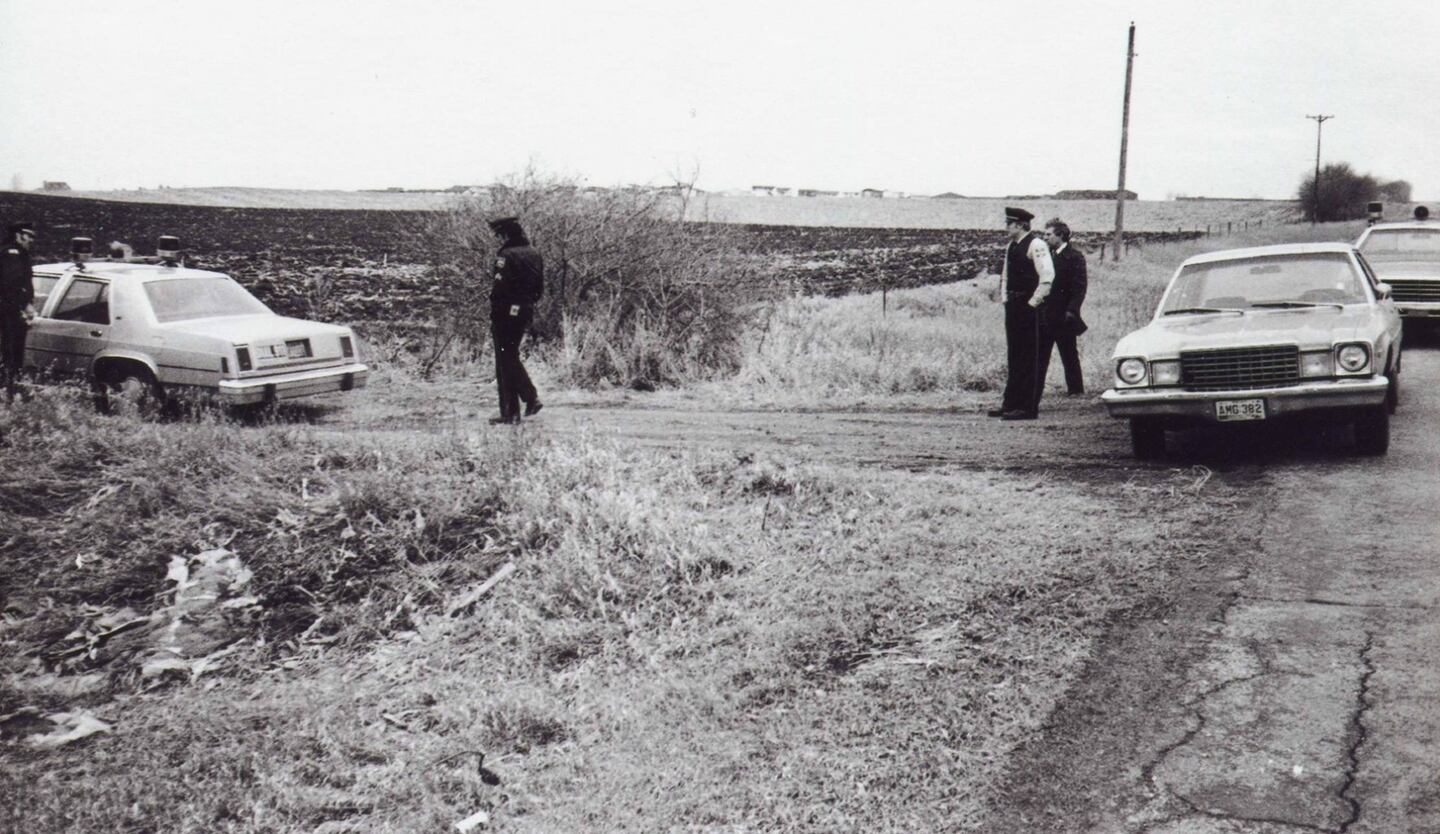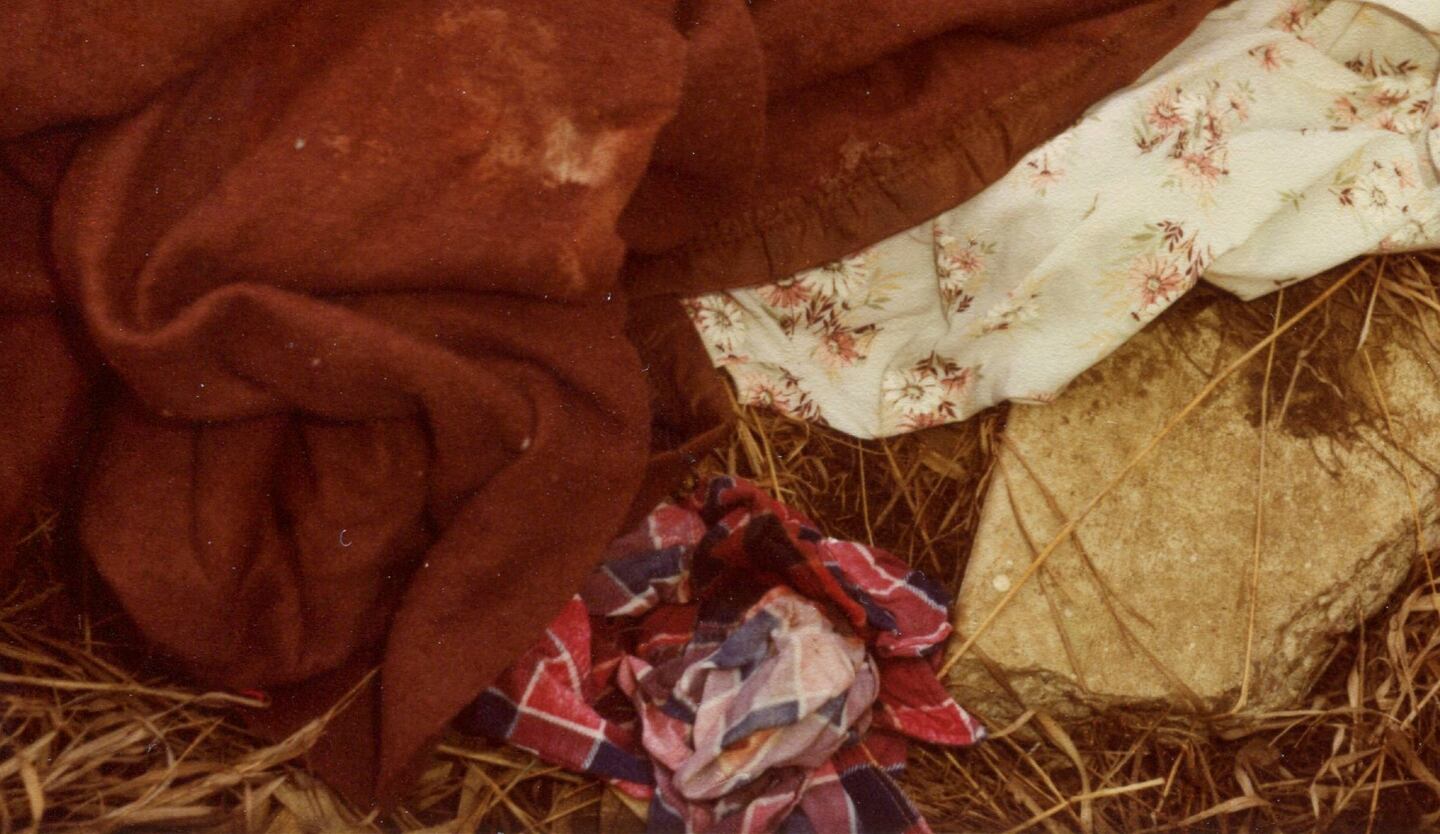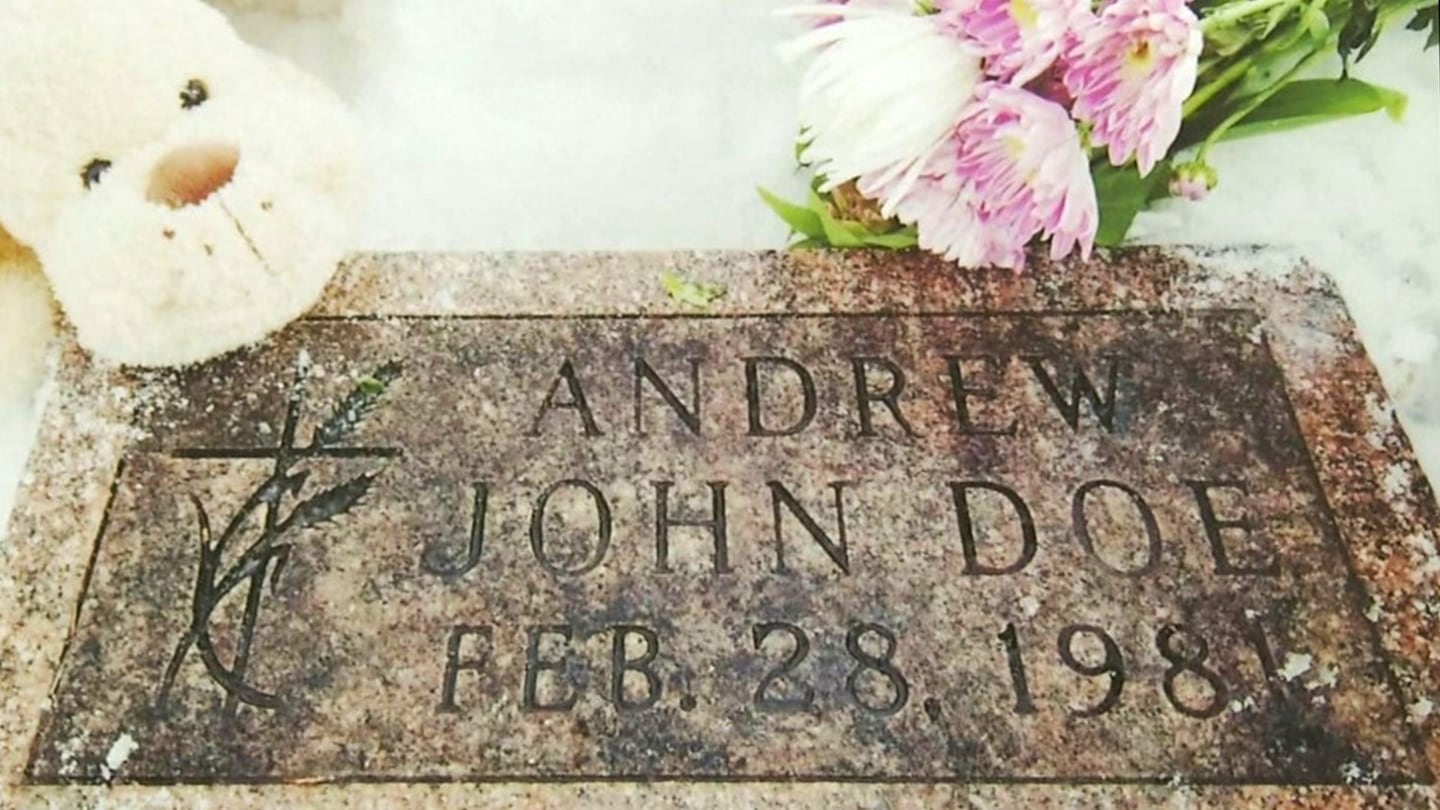SIOUX FALLS, S.D. — Forty years after the tiny body of a newborn baby boy was found in a South Dakota ditch, his tears frozen on his cheeks, “Andrew John Doe’s” birth mother has been convicted in his death.
Theresa Josten Bentaas, 60, of Sioux Falls, entered an Alford plea on a charge of first-degree manslaughter Friday in a Minnehaha County courtroom. According to Cornell Law, an Alford plea, also known as a “best interests plea,” allows a defendant to maintain their innocence while still accepting the consequences of a guilty verdict.
Two murder charges against her were dismissed, the Sioux Falls Argus Leader reported.
Bentaas essentially agreed that a jury of her peers would likely find her guilty of giving birth to her son Feb. 27, 1981, and abandoning him, with his umbilical cord and placenta still attached, in a ditch in a rural area of Sioux Falls.
Genetic genealogists were able to track Bentaas down using DNA from the baby’s bones.
At the time of her 2019 arrest, Bentaas told detectives she was “young and stupid” when she secretly gave birth in her apartment. She admitted driving the newborn to where he died.
Lee Litz and some friends were test-driving a Jeep the next morning when Litz spotted a wine-colored blanket in the ditch, which was located along a cornfield at Sycamore Avenue and 33rd Street. When he took a closer look, he saw Andrew.
“(The baby) had been loosely wrapped in a bloodstained blanket and left all alone in the cold,” then-police Chief Matt Burns said in 2019, when Bentaas was arrested.
Watch the 2019 news conference about Bentaas’ arrest below, courtesy of the Argus Leader.
At that time, authorities said the baby had lived a couple of hours before succumbing to exposure.
The Argus Leader reported that a defense expert, Dr. Leon Kelly, reviewed Andrew’s 1981 autopsy, however, and theorized that the boy died of complications during birth that became deadly without medical intervention.
The pathologist who did the autopsy determined that blood loss from the still-attached umbilical cord may have contributed to the baby’s death.
“There is no anatomic or investigative evidence to support prolonged survival of the infant resulting in death from exposure or hypothermia,” Kelly wrote in court records.
>> Related story: Genealogy, DNA solve case of newborn left to freeze to death in ditch 38 years ago
According to the Argus Leader, Judge Bradley Zell said the autopsy showed Andrew had oxygen in one lung and in his stomach, but not in his second lung.
Bentaas said little during the court hearing other than answering Zell’s questions.
Because she is being prosecuted under the laws in effect in 1981, her manslaughter charge is a Class 1 felony, the newspaper reported. She could be sentenced up to life without the possibility of parole.
An enduring mystery
The discovery of Andrew’s body stunned Sioux Falls residents, who took the infant into their hearts. About 50 people attended a burial that included a tiny white casket, flowers, stuffed animals and a pin on his pajamas that stated simply, “You are loved.”
Litz, the man who found the baby’s body, said in 2019 that he considers the boy a “long-lost son.”
“I sure would have adopted him rather than see him die like that,” Litz told the Argus Leader at the time.
Detectives had little to go on in the case. The only items found with the baby were the blanket, a sheet, a shirt and a pair of women’s underwear.
In 1981, DNA testing was still more than a decade away.
“The investigators worked very diligently during that time, however, they did not have anything that we have today as far as DNA technology and the advances that we have today,” Sioux Falls Detective Michael Webb said following Bentaas’ arrest.
The detective said investigators received tips in the case early on, but whenever they would go to a home hoping to find the dead infant’s mother, they would either find a woman still pregnant or one holding her own newborn in her arms.
Leads in the case quickly dried up and years passed by. Andrew John Doe’s story remained a popular one in Sioux Falls, with plenty of media attention over the years, but the leads just weren’t there.
The major turning point in the case came in the spring of 2009, when Webb decided to have the baby’s body exhumed. According to an arrest affidavit, the remains were sent to the University of North Texas Health Science Center, where lab workers were able to extract a DNA profile from the bones.
Andrew, who was exhumed that September, was returned to his grave in Sioux Falls’ St. Michael’s Cemetery the following June.
Investigators entered the baby’s DNA profile into South Dakota’s criminal databases at least once a year over the subsequent decade, but never found a match, Webb said.
Then came genetic genealogy.
How Bentaas was caught
When public genealogy databases became a popular new law enforcement tool in 2018, detectives had renewed hope. Investigators spent several months working with Parabon Nanolabs Inc., a Virginia-based company renowned for its work helping to solve cold cases.
Parabon used DNA left over from Andrew’s exhumation and found two potential family trees among the genetic profiles in its database.
“Of interest was that a lot of these family trees came back to Sioux Falls and the surrounding areas,” Webb said. “This was the first tip in 38 years that got us anywhere close to the baby’s identity.”
Detectives used the internet and birth and marriage records to narrow down their pool of suspects. They came upon a woman who had teenagers in 1981.
Bentaas, whose maiden name was Josten, was 19 when Andrew was born.
Detectives got DNA samples from beer cans, water bottles and cigarette butts in the trash outside the home of Bentaas and her husband, Dirk Bentaas, and on Feb. 15, the South Dakota state crime lab matched the couple’s DNA to that of Andrew John Doe.
They were the mother and father of the child, Webb said.
The DNA of the baby’s brother, one of the Bentaases’ two living adult children, was also found on a beer bottle, according to court records.
>> Read more true crime stories
A search warrant was obtained for DNA from both parents to confirm the match.
Dirk Bentaas was not charged because he never knew about his son’s birth or death, authorities said.
Theresa Bentaas is a Sioux Falls native who had no criminal history before being charged with her son’s murder. She and her husband married in 1987, the Argus Leader reported.
Bentaas’ sentencing is scheduled for Dec. 2.
©2021 Cox Media Group










